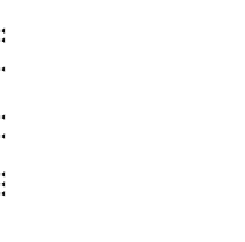Information Technology Reference
In-Depth Information
Fig. 1.
Lanes formation in a crowd. Three different situations are depicted, which
correspond to different model parameters. The left picture shows a crowd with no
lanes: movement is essentially a sequence of collision with no deviation. The center
picture shows the presence of dense lanes where individuals strongly follow each other.
The right picture shows a sparse lane where individuals spread over the whole space.
Black triangles indicate cells in which the mobility points to the left, whereas white
ones indicate that the mobility points to the right. A cross shows a cell with zero
mobility.
reduced number
ξ
of optional directions
c
i
around its favorite choice
c
F
when
selecting its actual way out of the cell.
Thus, the factors taken into account in the collision are: the favorite direction
c
F
of each individual, the local density
ρ
, i.e. the number of individuals per site,
and a quantity termed the mobility
µ
(
r
+
c
k
,t
) at all the neighboring cells
r
+
c
k
. The mobility is a post-collision normalized measure of the local flow and
is simply defined as
z
µ
=
1
ρ
n
i
c
i
(1)
i
=0
Parameters of the model are: (1) the critical density
ρ
0
, i.e. the number of
individuals per site after which free movement is hindered; (2) a disorder term
ξ ∈{
0
,z/
2
}
; and (3)
η ∈
[0
,
1] a term describing the will of individuals to prefer
cells with high mobility. Given these definitions, the collision algorithm is
1. move to target cell
r
+
c
t
with probability
1
if
ρ ≤ ρ
0
P
=
(2)
1
− ρ
0
/ρ
if
ρ>ρ
0
otherwise stay in current cell
r
(i.e. pick direction
c
0
).
2. choose the target cell
r
+
c
t
among the neighboring cells
r
+
c
j
which max-
imize the quantity
2
η
c
j
·
µ
(
r
+
c
j
,t
) + 2(1
− η
)
c
j
·
c
F
(3)






















































































































































































































